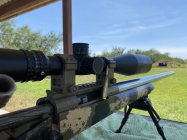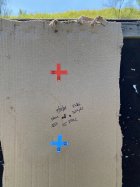You can have a great gun, but if you can't read wind, your bullets gonna get blown all over the place.
Just last Saturday, I was smacking 6" steel at 684 yards with regularity to the point of being boring. 85.5 gr 224V out of a bolt gun.
Then all of a sudden I couldn't hit anything. Totally baffled. Miss. Miss. Miss. Then I looked at the wind flags.... they were dead limp before, now suddenly dancing like Barishnikov.

While I usually give the narest flag the greatest consideration, here it was the furthest flag that gave the right dope. Ignore the wnd, read the wrong flag, get ready to miss. Alot. (Ask me how I know

) This is an under half minute gun.
Read my wind and dialed it right back in and it got boring again.

I wasn't competing for natl championships.

I'm not discounting a great gun. Yes you gotta have a capable gun. But a capable gun will miss just as much as a scud launcher if you got any wind. Where I shoot, there is *always* wind.












